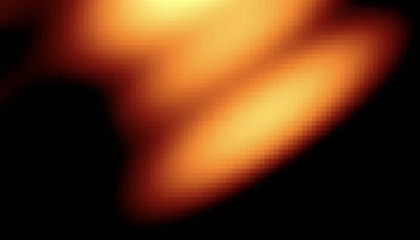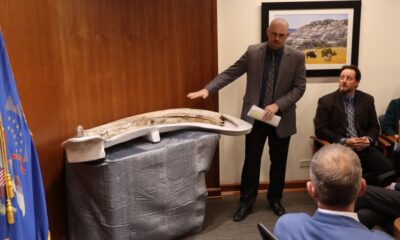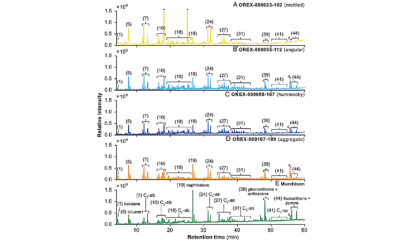Science
Scientists Capture First Image of Two Orbiting Black Holes

A groundbreaking study has produced the first-ever image of two black holes orbiting each other, a major milestone in astrophysics. This remarkable achievement sheds light on a bright object known as **Cygnus X-1**, which has intrigued scientists since the 19th century. The discovery was made possible through the collaboration of researchers from the **Event Horizon Telescope** (EHT) collaboration, marking a significant advancement in our understanding of these celestial phenomena.
The image reveals a dynamic interplay between the two black holes, providing insights into their behavior and the gravitational forces at play. This observation confirms long-held theories regarding the formation of black hole binaries and their impact on surrounding space. The findings were published in the journal *Astrophysical Journal Letters* on **March 27, 2024**.
Understanding Cygnus X-1
**Cygnus X-1** is located approximately **6,000 light-years** from Earth in the constellation Cygnus. It has been a subject of fascination for astronomers due to its intense brightness, which is a result of matter being accreted from a companion star. The presence of two black holes adds a layer of complexity, as their gravitational interaction can lead to the emission of high-energy radiation detectable from Earth.
The research team, led by scientists from the **University of Arizona**, utilized advanced imaging techniques to capture this unprecedented view. By linking radio telescopes across the globe, the EHT created a virtual Earth-sized telescope capable of observing the distant black holes. This method allowed researchers to achieve the necessary resolution to discern the unique features of the binary system.
Significance of the Discovery
The implications of this discovery extend beyond mere visual documentation. Understanding the dynamics of black hole pairs can provide essential information about the evolution of galaxies and the forces that shape the universe. According to **Dr. Anna L. Baird**, a leading astrophysicist involved in the study, “This image not only confirms our theoretical predictions but also opens new avenues for exploring the complexities of black hole interactions.”
The findings also pose new questions about the nature of black holes and their role in cosmic evolution. Researchers are now better equipped to study how these massive entities influence their surroundings, potentially affecting star formation and the distribution of matter in galaxies.
The collaboration of international teams in the EHT has proven crucial in this endeavor. By pooling resources and expertise, these scientists have pushed the boundaries of what is possible in astronomical research. The success of this project highlights the importance of global cooperation in tackling some of the universe’s most pressing mysteries.
As the study of black holes continues to advance, this image stands as a testament to human ingenuity and curiosity. It not only represents a significant scientific achievement but also invites the public to engage with the wonders of the universe. With further research, scientists hope to uncover even more about these enigmatic objects and the role they play in the cosmos.
-

 Technology4 months ago
Technology4 months agoDiscover the Top 10 Calorie Counting Apps of 2025
-

 Health2 months ago
Health2 months agoBella Hadid Shares Health Update After Treatment for Lyme Disease
-

 Health3 months ago
Health3 months agoErin Bates Shares Recovery Update Following Sepsis Complications
-

 Technology4 weeks ago
Technology4 weeks agoDiscover 2025’s Top GPUs for Exceptional 4K Gaming Performance
-

 Technology2 months ago
Technology2 months agoElectric Moto Influencer Surronster Arrested in Tijuana
-

 Technology4 months ago
Technology4 months agoDiscover How to Reverse Image Search Using ChatGPT Effortlessly
-

 Technology4 months ago
Technology4 months agoMeta Initiates $60B AI Data Center Expansion, Starting in Ohio
-

 Technology4 months ago
Technology4 months agoRecovering a Suspended TikTok Account: A Step-by-Step Guide
-

 Health4 months ago
Health4 months agoTested: Rab Firewall Mountain Jacket Survives Harsh Conditions
-

 Lifestyle4 months ago
Lifestyle4 months agoBelton Family Reunites After Daughter Survives Hill Country Floods
-

 Technology3 months ago
Technology3 months agoUncovering the Top Five Most Challenging Motorcycles to Ride
-

 Technology4 months ago
Technology4 months agoHarmonic Launches AI Chatbot App to Transform Mathematical Reasoning


















